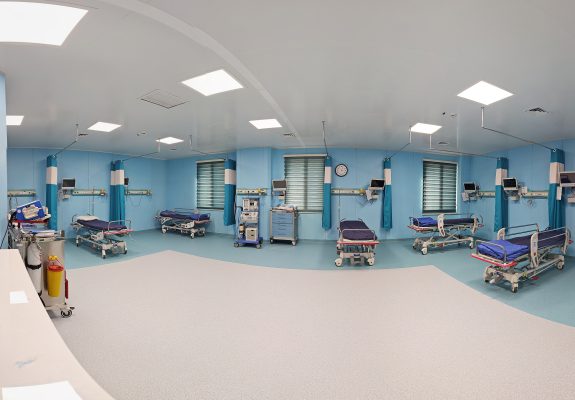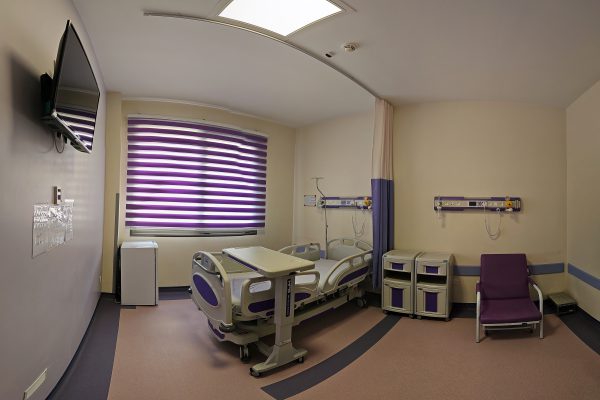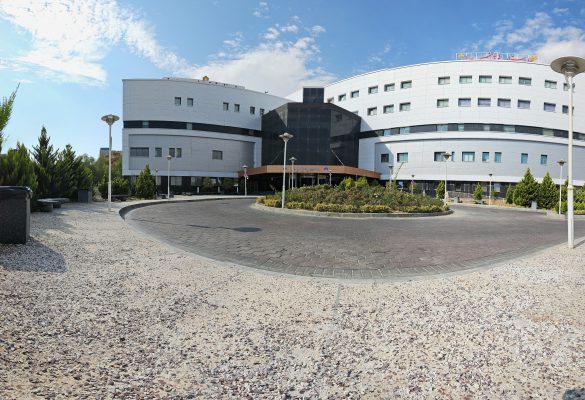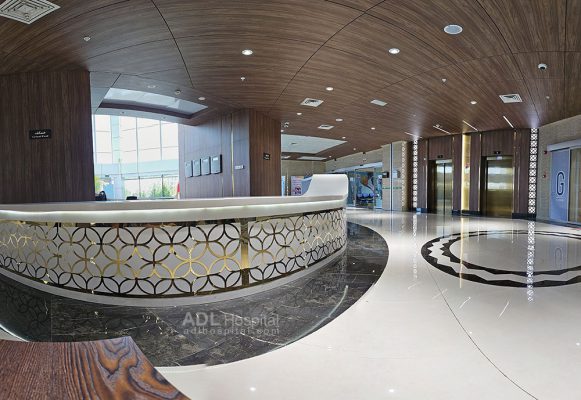Full facelift in Iran
A Full facelift in Iran , also known as a traditional or standard facelift, is a surgical procedure designed to reduce visible signs of aging in the face and neck. The procedure can correct sagging in the middle of the face, deep creases below the lower eyelids, deep creases along the nose extending to the corner of the mouth (nasolabial folds), fat that has fallen or has disappeared, loss of skin tone in the lower face that creates jowls, and loose skin and excess fatty deposits under the chin and jaw.
If you want to operate in Tehran Adl Hospital, click the button below and follow the steps
What surgeries included in Full facelift in Iran
A full facelift is a comprehensive procedure that addresses aging signs in the lower two-thirds of the face and the neck. It typically involves the following:
1. Mid-Facelift: This targets the middle portion of the face, including the cheeks and the area around the nose and mouth. It can reduce sagging and smooth out deep lines or folds.
2. Lower Facelift: This targets the lower part of the face, including the jawline and jowls. It can tighten loose skin, reduce the appearance of jowls, and create a more defined jawline.
3. Neck Lift (or Submentoplasty): This is often included in a full facelift to address sagging skin, muscle banding, or fat accumulation in the neck. It can result in a smoother, leaner, and more youthful-looking neck.
Additionally, procedures like the following may be combined with a full facelift for more comprehensive results, but they are not typically considered part of the facelift itself:
– Brow Lift or Forehead Lift: This lifts and tightens the skin on the forehead and around the eyebrows, reducing the appearance of wrinkles and elevating drooping eyebrows.
– Eyelid Surgery (Blepharoplasty): This can correct drooping upper eyelids and puffy bags below the eyes.
– Facial Fat Transfer: This involves harvesting fat from one area of the body and injecting it into the face to restore lost volume.
– Skin Resurfacing Treatments: These treatments, including chemical peels, laser resurfacing, or dermabrasion, can improve the texture and tone of the skin, reducing the appearance of wrinkles, scars, or discoloration.
The specific procedures included in your facelift will depend on your individual needs and aesthetic goals. It’s important to discuss your desired outcomes with your plastic surgeon during your consultation. They can create a personalized surgical plan that addresses your concerns and achieves the best possible results.
A full facelift, also known as a complete facelift or traditional facelift, is an extensive surgical procedure that aims to reduce the visible signs of aging in the face and neck. Surgeons use various techniques based on the patient’s specific needs, but the overall goal is to create a more youthful and revitalized appearance.
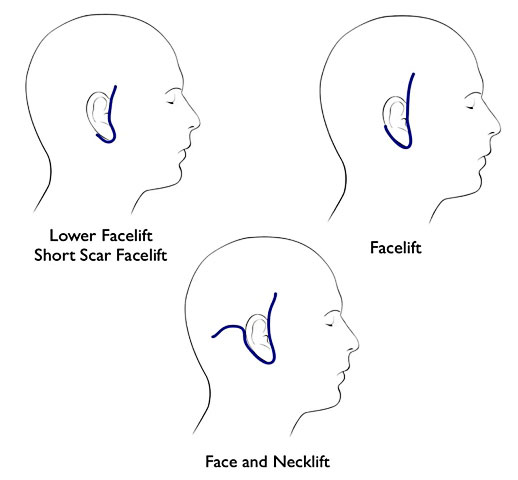
Procedure
Typically, a full facelift begins with anesthesia to ensure patient comfort. General anesthesia is commonly used, but in some cases, conscious sedation may be an option.
Once the patient is sedated, the surgeon will make incisions. These are usually made along the hairline, starting at the temples, continuing around the front of the ears, and ending behind the ears in the lower scalp. Sometimes, an additional incision under the chin may be necessary, especially if the patient wants to improve the appearance of the neck.
After making the incisions, the surgeon tightens the underlying tissues and muscles of the face. This process often involves repositioning fat and tissue to restore volume and contour to the face. The surgeon then re-drapes the skin over the newly reshaped face, removing any excess skin.
The incisions are then closed with sutures or skin adhesives. Some surgeons may place temporary drainage tubes in the incisions to help prevent fluid buildup.
Recovery
Recovery from a full facelift varies from patient to patient. Generally, patients can expect to experience some bruising, swelling, and discomfort in the initial days following surgery. These symptoms can be managed with medication prescribed by the surgeon.
Many patients can return to normal daily activities within two weeks after the surgery, although strenuous activities should be avoided for about a month. It’s important to follow all post-operative instructions provided by the surgeon, including wound care, avoiding certain activities, and attending follow-up appointments.
Results
The results of a full facelift are not immediately visible due to swelling. As the swelling decreases, the improvements in facial contours and skin tightness will become more apparent. The final results can take several months to fully develop as the face continues to heal.
With proper care and a healthy lifestyle, the results of a full facelift can last for many years. However, a facelift cannot stop the aging process, and over time, signs of aging may gradually reappear.
Risks
As with any surgical procedure, a full facelift carries potential risks, including bleeding, infection, poor wound healing, nerve injury, and complications related to anesthesia. Additionally, some patients may not be satisfied with the cosmetic results and may require additional surgery.
It’s crucial to discuss all these factors with your plastic surgeon during your consultation to ensure that a full facelift is the best choice for your aesthetic goals and health status.
Recovery After Full facelift in Iran
The recovery period after a full facelift can vary greatly from person to person. However, here’s a general timeline you might expect:
Immediately After Surgery
After the procedure, your face will likely be bandaged to minimize swelling and bruising. Small tubes might be present to drain any excess blood or fluid. It’s normal to experience some discomfort, swelling, and bruising, but these symptoms can be managed with medications prescribed by your surgeon.
First Week
During the first week post-surgery, you’ll need to rest and take it easy. You should keep your head elevated and avoid any strenuous activities. You’ll likely have a follow-up appointment with your surgeon to remove any drains and possibly the sutures, depending on the type used.
Second Week
Most people feel ready to venture out in public and return to work about two weeks after a facelift, although bruising and swelling may still be noticeable. You’ll still need to avoid strenuous activities, including heavy lifting and vigorous exercise. Your surgeon may provide you with special instructions about caring for your surgical incisions and using makeup to cover any remaining bruising.
One Month and Beyond
By about the one-month mark, you’ll likely be able to return to most of your normal activities, including exercise. However, it’s crucial to follow your surgeon’s specific instructions regarding activity levels to avoid complications.
Swelling and bruising should be mostly resolved by this point, but some minor swelling might persist for several months. The scars from your facelift will begin to fade over time but may not completely disappear.
Long-term
The final results of your facelift will become apparent several months after surgery as your face continues to heal and the swelling goes down completely. It’s important to protect your skin from the sun and maintain a healthy lifestyle to preserve the results of your facelift.
Remember, everyone’s recovery timeline will be different, and it’s important to listen to your body and not rush the healing process. Always follow your surgeon’s specific post-operative instructions and reach out to them if you have any concerns during recovery.
Is Full facelift in Iran right for me ?
Deciding whether a full facelift is right for you involves considering several factors, including your overall health, your aesthetic goals, and your willingness to undergo surgery and the associated recovery process. Here are some factors to consider:
1. Age and Health: Facelifts are most commonly performed on individuals between the ages of 40 and 70. However, health matters more than age. You should be in good overall health before undergoing a facelift. Conditions like high blood pressure, blood clotting disorders, or a history of poor wound healing could increase your risk of complications.
2. Skin Elasticity: Good candidates for a facelift have skin that retains some of its natural suppleness and flexibility. This is important for the skin to heal nicely and conform to its new, improved contours.
3. Bone Structure: Strong and well-defined bone structure provides support for your facial skin and tissues and can help achieve the best results.
4. Realistic Expectations: It’s important to understand that a facelift can improve your appearance and reduce signs of aging, but it won’t make you look like a completely different person. It also won’t stop the aging process.
5. Lifestyle Habits: Smoking can significantly increase the risk of complications during and after surgery, as it hinders the healing process. If you’re a smoker, you’ll likely need to quit for a period before and after the surgery.
6. Financial Considerations: Facelifts can be expensive, especially since they’re considered cosmetic procedures and not typically covered by insurance. Make sure you’re prepared for the financial commitment.
Ultimately, the best way to determine if a full facelift is right for you is to consult with a board-certified plastic surgeon. They can assess your condition, discuss your goals, and help you understand your options. They’ll also consider your general health and medical history to ensure you’re a good candidate for surgery.
Here’s a general overview of the full facelift procedure:
1. Consultation: The first step is a thorough consultation with a plastic surgeon. The surgeon will evaluate your facial structure, skin elasticity, and overall health. You’ll discuss your goals and expectations for the surgery.
2. Anesthesia: Facelifts are typically performed under general anesthesia, though local anesthesia with sedation can also be used.
3. Incisions: The surgeon makes incisions that often start at the temples in the hairline, continue around the ear, and end in the lower scalp. An additional small incision may be made under the chin to improve the appearance of the neck.
4. Lifting and Tightening: The surgeon lifts the skin and may tighten the underlying muscles and tissues. Excess skin is removed.
5. Closing the Incisions: Sutures or skin adhesives close the incisions. Once healed, the incision lines from a facelift are well concealed within the hairline and in the natural contours of the face and ear.
6. Recovery: After the surgery, you’ll likely have a bandaged face and possibly drainage tubes. Swelling and bruising are normal and will subside over time. Full recovery can take several weeks.
7. Results: A Full facelift in Iran aims to give a fresher, younger appearance. The results won’t be immediately visible due to swelling, but as this subsides, the improvements will become more apparent.
As with any surgical procedure, a full facelift carries potential risks including infection, bleeding, scarring, nerve damage, and dissatisfaction with the aesthetic results. It’s important to discuss these risks with your surgeon during your consultation.
Remember, the decision to have a facelift is highly personal. If you’re considering this procedure, ensure you have realistic expectations and that you’re doing it for yourself, not to fulfill someone else’s desires or to try to fit an ideal image.




